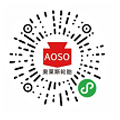
1. The efficiency of tyre distributors creates vitality
For tyre distributors, efficiency is a vitality, and the capital turnover rate determines whether a dealer is stronger. As a distributor in the fast-moving consumer goods industry, only if the capital turnover rate is greater than or equal to 10 times per year can it be guaranteed to be profitable in the daily business process.
And all of these require tyre distributors to shorten the turnover cycle as much as possible, improve the capital turnover rate, and win their own best interests by increasing the number of capital turnover.
2. Improve the aggregated value chain of tire companies
The core idea of the converged value chain is to improve the efficiency of the system. Improve the efficiency of the company's system through tire distribution and channel efficiency.
Tire distribution is actually the process of completing sales with the help of external resources, and the management of tire distribution is to solve the problem of efficiency. By establishing proper distribution channels, tire companies can effectively lower the risk of stockpiling.
Asking for efficiency from channels is easy to speak, but not easy to do. For a long time, channel development has remained the main feature of the FMCG industry.
It is necessary to ensure that distributors are treated equally as much as possible, and do not focus on developing only one. Quantity is the guarantee of sales. Only by guaranteeing the number of tire distributors can the sales of the products be guaranteed.
3. Control risks of tyre distributors
The first is to control the inventory of tires. For products with a high market share, the inventory of dealers should be less than or equal to 1 times the monthly sales volume, and the second batch of dealers and retail terminals should be less than or equal to 1.5 times the monthly sales volume.
For products that have just been launched and have high growth potential, the inventory of tyre distributors should be less than or equal to 1.5 times the monthly sales volume, and the second batch of dealers and tire retail terminals should be less than or equal to 2.5 times the monthly sales volume.
In the process of changing tire market conditions, dealers must master some skills to face changes in the market. When the dealer's inventory is too large and the distributor's inventory is insufficient, appropriate channel promotion policies should be adopted to divert the inventory.
In addition to the above two methods, tyre distributors can also take the method of sub-brand aggregation to control risks. It is necessary to integrate several distribution channels. Even if the products of the same tire company should be considered for the establishment of categories, as many tire distributors as possible should be recruited.
Reflect value through integration, upgrade management advantages, monopolize local competition, and concentrate on strengthening local markets in the shortest possible time.
4. Tyre distributors should be good at seizing hidden sales opportunities
In the daily business process, tyre distributors put their main energy on traditional channels such as supermarkets and circulation. However, as the competition in this part of the channel becomes more and more intense, the dealers must seize the potential sales opportunities to develop new channels.
5. Logistics of tyre distributors
With the continuous development of the transportation industry, the way of tire logistics has undergone a revolutionary change. Currently, logistics costs in China account for 18% of commodity costs.
Therefore, good logistics is important for tyre distributors to control costs. "Using aggregate growth instead of yourself; operating under different brands and establishing multiple distribution networks; trying to let manufacturers ship directly."
6. Warehouse management trends of tire companies
Warehouse management reflects the three characteristics of high efficiency, accuracy, and low intensity. In the process of change, the functions of dealers have also changed. Distributors are becoming more and more logistics-oriented, and the distribution-type division of labor for tire distributors is becoming more and more obvious.
The advent of the era of online sales calls for distribution units, but the organizational process is relatively more important. Another new trend is the emergence of database marketing.
7. Database marketing of tyre distributors
The emergence of tire database marketing is to control tire terminals by controlling tire channels and ultimately achieve the purpose of controlling tire consumers.
The main feature of tire database marketing is precise dynamic management of tire products, the establishment of the terminal database and consumer database.
The establishment of the terminal database can strengthen the management of sales promotions, sales levels, and marketable products by tyre distributors. Managing the consumer database is to capture consumers and control the market dynamics.
 E-mail: tyre@aolaisi.com.cn
E-mail: tyre@aolaisi.com.cn Tel: 0714-3509761
Tel: 0714-3509761  Language
Language 




